“The overall quality of the work was high,” says juror Nedjeljko Špoljar. “Many of the entries that didn’t make it into the Annual wouldn’t have been discarded if it wasn’t for the magazine’s tough criteria. And that’s what makes the CA Annuals so special, prestigious and valuable.”
“Most of the work stood out not only for the quality of its design but also for its execution,” juror Ana Mota says. “The investment in graphic processes and materials shows that there is a market in which clients understand the importance of investing in good design as well as the return this investment can have.”
“Some of the most powerful work in this year’s Design Annual focused on harnessing design to support a cause rather than sell a product,” says juror David Sieren. “The marriage of exceptionally well-executed design with critical issues facing society and our planet was inspiring.”
“A larger portion of the entries utilized motion graphics and videos, which reflects a growing trend toward dynamic and interactive design experiences, bridging traditional design boundaries with technological advancements,” juror Suzanne Redmond Schwartz says.
“It’s exciting to see how motion design is becoming integral to brand identity,” says juror Kelli Miller. “This is something I have been championing since my days in broadcast design, so it was really great to see how important it has become in the larger design conversation.”
“The book design entries were a great example of innovative thinking and bending commonly accepted rules in terms of format, techniques, typography or composition,” Špoljar says. “It’s always one of the most interesting categories and didn’t disappoint this year either.”
“I was surprised and delighted to see a high number of submissions moving beyond minimalist aesthetics in favor of a push into more textural, gestural expression—and, in many cases, chaos,” says Sieren. “Call it style, substance or something in between, but much of the work had a formal sense of depth and soul that has been lacking from many recent, more antiseptic minimalist trends.”
Several jurors commented on the packaging innovations they saw this year.
“In the packaging category, the collision of minimalist design and illustration was eye-catching,” juror Sha Feng says.
“The minimum order quantity and cost to manufacture your own bottle have plummeted in recent years, and it shows in the many businesses investing in proprietary bottles and containers to create distinctive brand assets,” says juror Matt Remphrey.
“I was surprised by the amount of great entries in the packaging category,” Špoljar says, “and not just those using expensive production techniques but also a great deal of cheaply produced entries that were ingeniously crafted and beautifully designed.”
Other jurors commented on the strong showing by students.
“Among all the projects I found particularly interesting were the many surprisingly convincing student projects, where I found a growing interest for packaging design and motion graphics and a tendency to keep storytelling central in their designs,” says juror Federica Bello.
“Particularly noteworthy was the student work, which showcases how educational innovation in design is shaping future generations of designers,” Schwartz says.
“There really is a lot of good work coming out of the hands of the younger generations, while also highlighting the often-invisible work done by mentors, teachers and schools that contribute to and influence this new generation of designers,” Mota says.
David Sieren expressed a contrarian viewpoint.
“I saw a lack of experimentation and risk taking in many of this year’s student submissions,” says Sieren. “It’s not that the work wasn’t well crafted or conceptually grounded; it’s just that it felt less like that of students on a journey of discovery and experimentation and more of students driven to land a job. Finding a job in this market is important, but I hope the sense of experimentation and the opportunity—or obligation—to take big risks while you’re finding your way in art school aren’t being lost. Those risks are where the seeds of bold, audacious ideas are first sown.”
Other jurors expressed where they found their biggest disappointments.
“My biggest disappointment was a lack of explanation in many projects,” Bello says. “Quite often, the rationales were superficial. It’s not an easy job to be concise, but I think some designers should make a better effort at it.”
“I think it’s the lack of risk taking,” says Robitaille. “I often found projects conventional without any big surprises.”
“Some of the works in the competition were obviously similar,” says Feng. “The regional cultural attributes of the works themselves were not strong.”
“I get disappointed seeing the same trends recur,” says Miller. “It feels like studios and clients are afraid to do great work. There was certainly some risky work present—which I applaud and love—but the outstanding work was accessible, clever, unique and stood out. I think that’s what everyone wants at the end of the day.”
When asked what developments are altering the design profession, the judges mentioned AI repeatedly.
“The evolution of technologies has brought efficiency and the automation of some project execution processes, freeing up space and time for the designer’s true purpose: to think,” Mota says.
“It is certain that advances in AI will be a game changer in the industry,” says Robitaille. “It will be up to us to use it well and, above all, to prove with the quality of our work that our contribution is relevant.”
“AI will undoubtedly continue to revolutionize the field of design, serving as a tool for ideation, visualization and efficiency,” Schwartz says. “However, it’s crucial to ensure that AI remains a supportive tool rather than a replacement for human creativity.”
“Perhaps this will fuel a return to human-based endeavors and design outcomes,” says Remphrey. “The world does feel like it’s at a crossroad politically, socially and culturally, and designers are commenting and responding to that.”
Jurors also described some of the challenges facing the profession in the future.
“The future development direction of design is an interdisciplinary subject that needs to be combined with all walks of life, and, more importantly, it needs to cooperate with the fields of science, technology and AI,” Feng says.
“The direction of design in the near future? Being adaptive and capable of responding to a plurality of requests and needs in any business, social and cultural environment,” says Bello.
“I think we will have to adapt more and more to technological developments,” Robitaille says. “Despite these ever-more present and rapid advances, I hope that the emotion and sensitivity in the projects are not lost in favor of cold, watered-down projects that are all similar.”
“It feels like an impossible time to be a small-ish boutique design studio,” says Miller. “You can work for a giant tech company, maybe an ad agency (which are facing their own instability), or you can hustle as a solo designer. But anything in between is extremely fraught and unstable. It’s unsustainable, honestly.”
“Sustainability will continue to drive design decisions to support a circular economy in recycling, reuse and less waste,” Remphrey says. “And the blurring between digital and analog worlds will continue to occur at an exponential rate.”
A minimum of six out of nine votes was required for inclusion in this year’s Annual. Judges were not permitted to vote on projects with which they were directly involved; I voted in their stead. I would like to extend our grateful appreciation to our jurors for their conscientious efforts in selecting our 65th Design Annual. —Patrick Coyne ca

Federica Bello is design director at Milan-based design studio Lateral Creative Hub. The studio, which she co-owns with her husband and creative director Francesco Fallisi, specializes in advertising, branding and packaging design for clients in the food, cosmetic and nonprofit sectors. Bello brings her longtime experience in the fashion industry and knowledge in packaging, paper and editorial design to her innovative work. She has received national and international awards, including from A’ Design Award, ADCI Awards, Communication Arts, European Design Awards and Pentawards. Bello has also been a judge for the ADCI Awards and the ADCI Young Lions Competition.
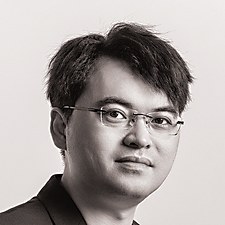
Sha Feng is founder and creative director of SoFeng Design in Suzhou, China. He graduated from the Academy of Fine Arts in Florence, Italy, with a master’s degree in 2017. His work has been recognized by the ADSTARS, Joseph Binder Award, Communication Arts, Core77 Design Awards, EKOPLAGÁT ´17, German Design Award, Good Design Award Australia, HKDA Global Design Awards, iF Design Award, Pentawards, Red Dot Awards and Type Directors Club. He has served as an international judge for competitions including A’ Design Award, ADSTARS, Ecuador Poster Bienal and Posterheroes. He is also a visiting professor at Zaozhuang University in Zaozhuang, China.
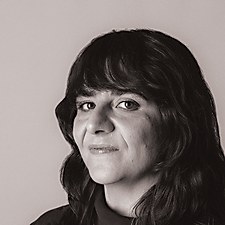
Kelli Miller is partner, director and executive creative director at And/Or Studio in New York. Miller has worked in motion design and branding for more than fifteen years with entertainment networks and brands like CBS, Google, HBO, MTV, National Geographic, Netflix and Spotify. She has directed show titles and live action packaging for FX’s CAKE, HBO’s Last Week Tonight with John Oliver and Netflix’s White Hot, as well as film titles for Rhys Ernst’s ADAM, Kelly Reichardt’s Certain Women and Eliza Hittman’s Never, Rarely, Sometimes, Always. Her commercial directing experience includes branded films, commercials and music videos.
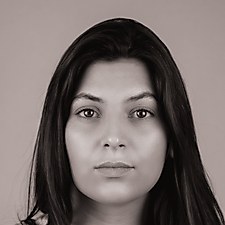
Ana Mota cofounded ¼ studio, a Porto, Portugal–based design studio, with Jorge Araújo in 2019. The studio focuses on brand identity, editorial, exhibition graphics and web design. Her path in design started at the Instituto Politécnico do Porto and extended to her MFA at the Faculdade de Belas Artes da Universidade do Porto. She has aligned both her education in design and visual arts within the projects developed at ¼. Her work has been exhibited in several design biennales; published in prestigious magazines, such as Slanted; and recognized with several awards such as the CCP, Communication Arts, European Design Award and Graphis.

Matthew Remphrey is owner and executive creative director of Parallax Design, established in 2001 in Adelaide, Australia. In Adelaide, Remphrey is surrounded by some of the world’s greatest wine regions including Barossa, Clare, Coonawarra and McLaren Vale, so it may have been inevitable for him to focus on wine and drinks as a designer. Parallax’s team of strategy, brand, packaging and digital specialists help clients define and position their brands in the market. The design firm pairs curiosity with the client’s vision of success to create transformative outcomes through strategic thinking, informed design and customized digital solutions.
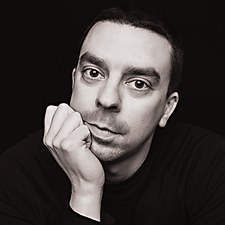
Daniel Robitaille is creative director at Montréal-based design firm Paprika. After graduating from the Université du Québec à Montréal, Robitaille was recruited by ad agency Sid Lee, where he worked on several large-scale projects. In 2010, he joined Paprika as art director before becoming creative director in 2019. Throughout his career, Robitaille has won more than 300 national and international awards and prestigious contests, notably AIGA, Applied Arts, Art Directors Club, Communication Arts, Dieline, Grafika, Graphis, IDEA, One Show, Pentawards and Type Directors Club. Since 2020, Robitaille has been teaching at his alma mater’s design school.
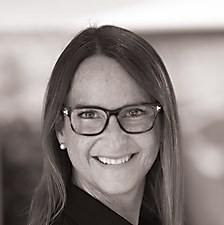
Suzanne Redmond Schwartz is founding partner and president of RSM Design in San Clemente, California, where she distills the essence of a brand and realizes it in a built environment. Her world-class experience has transformed projects from Saudi Arabia to Southern California, earning accolades and positioning RSM Design as a global leader in architectural graphic design. Schwartz holds a BFA in graphic design and packaging from ArtCenter College of Design in Pasadena as well as a BS in business from UC Santa Barbara. She is also actively involved with the Society of Experiential Graphic Designers and Women Business Enterprise.

David Sieren is partner and director of design and strategy at One Design Company in Chicago, Illinois, focusing on creating powerful experiences at the intersection of research, design, communication and technology. Sieren’s work and the work of his teams have been recognized by AIGA, BBC, Brand New, Communication Arts, the Design Museum of Chicago, Gestalten, HOW, Print, Society of Typographic Arts and the New York Times. He also teaches visual communication, typography and design history at DePaul University. In 2007, Sieren cofounded The Post Family,
a collaborative focused on creating experiences that engage communities through art and design.

Nedjeljko Špoljar is founder and creative director of Zagreb, Croatia–based design agency Sensus Design Factory. The firm has a diverse range of clients in both cultural and commercial sectors. His projects have been awarded by AIGA, Communication Arts, Graphis, I.D., Print, STA Chicago and Type Directors Club. Špoljar’s work is part of numerous museum collections worldwide, including the Bibliothèque Nationale de France in Paris, Columbia University Rare Books Collection in New York, Deutsches Buchund Schriftmuseum in Leipzig, the Museum of Architecture and Design Ljubljana, and the Warsaw Poster Museum.